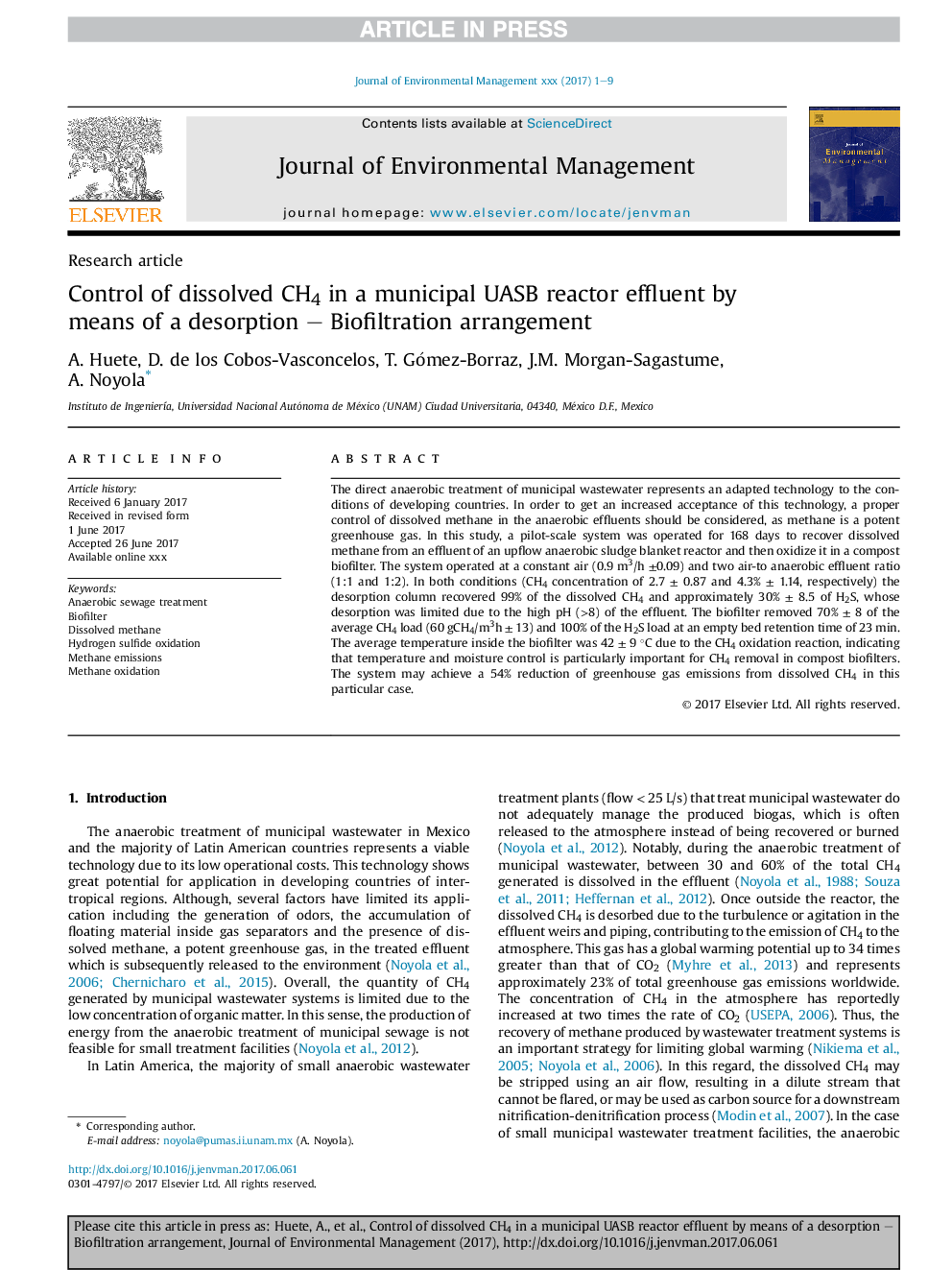| Article ID | Journal | Published Year | Pages | File Type |
|---|---|---|---|---|
| 7477448 | Journal of Environmental Management | 2018 | 9 Pages |
Abstract
The direct anaerobic treatment of municipal wastewater represents an adapted technology to the conditions of developing countries. In order to get an increased acceptance of this technology, a proper control of dissolved methane in the anaerobic effluents should be considered, as methane is a potent greenhouse gas. In this study, a pilot-scale system was operated for 168 days to recover dissolved methane from an effluent of an upflow anaerobic sludge blanket reactor and then oxidize it in a compost biofilter. The system operated at a constant air (0.9 m3/h ±0.09) and two air-to anaerobic effluent ratio (1:1 and 1:2). In both conditions (CH4 concentration of 2.7 ± 0.87 and 4.3% ± 1.14, respectively) the desorption column recovered 99% of the dissolved CH4 and approximately 30% ± 8.5 of H2S, whose desorption was limited due to the high pH (>8) of the effluent. The biofilter removed 70% ± 8 of the average CH4 load (60 gCH4/m3h ± 13) and 100% of the H2S load at an empty bed retention time of 23 min. The average temperature inside the biofilter was 42 ± 9 °C due to the CH4 oxidation reaction, indicating that temperature and moisture control is particularly important for CH4 removal in compost biofilters. The system may achieve a 54% reduction of greenhouse gas emissions from dissolved CH4 in this particular case.
Keywords
Related Topics
Physical Sciences and Engineering
Energy
Renewable Energy, Sustainability and the Environment
Authors
A. Huete, D. de los Cobos-Vasconcelos, T. Gómez-Borraz, J.M. Morgan-Sagastume, A. Noyola,
